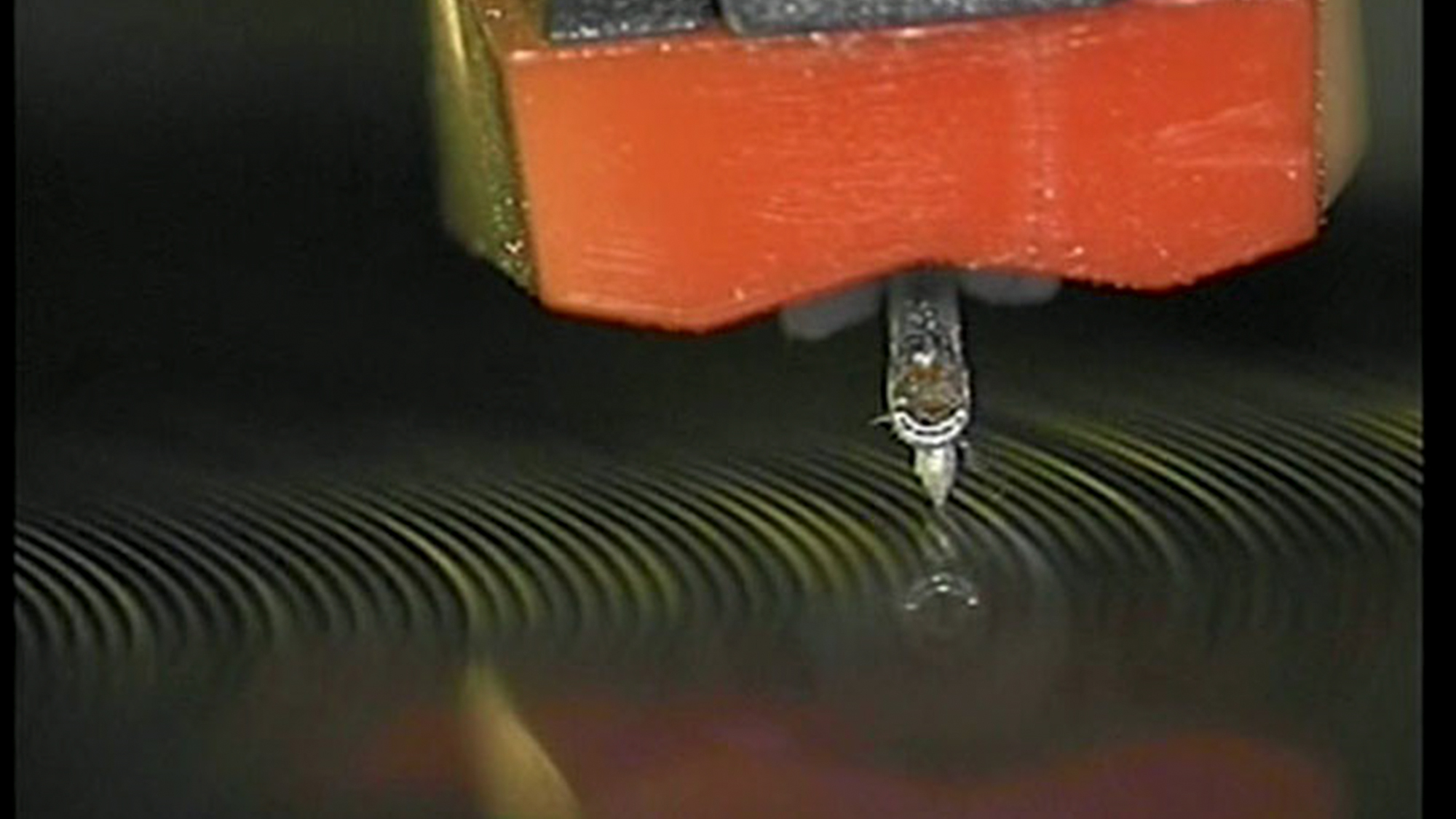-3x1.jpg)
Film / video package 6
The image and its double through the prism of pop, or a certain idea of the 1980s (Ericka Beckman, Enrique Fontanilles and Unglee)
La Centrale, Wednesday, October 8 to Sunday, October 12, 2025 / 1:00-6:00 PM
For three months, a program of films and videos offers a journey through half a century of moving images, exploring some of the possible articulations between sound, music and image. Through a series of thematic "bouquets" or ones centered on a particular filmmaker or video artist, the program presents the work of emblematic or little-known artists, video art pioneers or film thurifers.
In a dialogue between projected works (room 1) and works on cathode-ray monitors (room 2), between formal, ethnographic and political approaches to sound, the program highlights the uses and practices of the musician's portrait, performance and soundscapes.
Each week, the films and videos disseminate discreet touches, apparitions and motifs, connections between bouquets and nods to the Biennial program: Paganini, a Sony Walkman, Jean-Luc Godard revisited by John Zorn, salt deserts, the Bachmann / Ceresole couple, brass bands and more.
A proposal by Maxime Guitton.
Room 1
Ericka Beckman, You The Better
1983, 32', digitized 16 mm film, color, sound
Collection du Fonds d'art contemporain de la Ville de Genève (FMAC)
"You The Better" is a film based on games of chance, and like roulette or craps, this one is closed - that is, the player can't really influence the outcome. A team of uniformed players [...] run the mechanics of a game in the service of an off-screen betting entity, the "House". Although the game constantly changes and players are replaced, one thing remains unchanged: the "House" is hidden and controls the bets, the "chance" of winning is zero. In reality, the game is not played between the players, but between the "House" and the "Bettor"." (Ericka Beckman). The soundtrack to You The Better, written by Beckman and Brooke Halpin, plays a key role: here we hear Beckman poking fun at the consonance between the terms bettor and better.
Ericka Beckman
Born in 1951 (USA)
Based in New York and Boston
Ericka Beckman's films from the 1970s onwards are on the bangs of contemporary art and experimental cinema. Colorful characters, set against black backgrounds, interpret situations that seem to come out of a dream, a musical, a fairy tale or a TV show. Her stagings are based on preparatory drawings. Influenced by new wave, Ericka Beckman belongs to the so-called image generation (Cindy Sherman, Barbara Kruger, Robert Longo, Louise Lawler, etc.), a group of artists who question the saturation of images produced by the mass media, inviting the public to take a critical look at them.
room 2
Enrique Fontanilles, Beam
1981, 4'24'', video, black & white, sound
Collection du Fonds d'art contemporain de la Ville de Genève (FMAC)
A track by the band Touch El Arab is punctuated by signals from a Fairlight synthesizer. The strict division of the monitor surface into black and white sections and the succession of rapidly changing rhythms transform the screen into a stroboscope.
Enrique Fontanilles, Two Strings
1985, 6', video, color, sound
Collection du Fonds d'art contemporain de la Ville de Genève (FMAC)
Through this collaboration with his brother, musician Fernando Fontanilles, Enrique Fontanilles proposes an experiment in visualizing music. An extreme close-up of a bass played in front of a video monitor out of sync with the camera creates an abstract image of the vibrations of the strings as each note sounds.
Enrique Fontanilles
Born 1951 (ESP)
Based in Basel
Enrique Fontanilles has been working with both words and images since the 1980s. His videos and photographs are often linked to performances in which he recreates historical scenes with the help of performers. His photographs are also self-portraits, in which he wears masks improvised from everyday objects during the Covid, or cross-references the faces of famous people. His work takes a critical look at the intrusive dimensions of the digital image, as well as the links between certain industries and the Nazi regime, and the relationship between art and the most accentuated forms of capitalism.
Unglee, Radio Serpent
1980, 12', 16 mm digitized film, color, sound
Light Cone
Shot in the apartment of illustrator and poster artist Benjamin Baltimore, whom Jean Eustache called "radio-serpent" because of his keen eye for gossip, the film captures the high-tech atmosphere of the time, with neon and fluorescent lighting, vinyl records, Sony Walkman and synthetic voices. The soundtrack is by Sylvain Boughida.
Unglee
Born 1954 (FR)
Based in Paris
Unglee made a name for himself in the late 1970s with his experimental films and in the 1980s with his photographs of tulips. In addition to his exhibitions, he contributes to art magazines and publishes his own fictional obituaries. His work, at the confluence of language and the visual arts, exudes an ironic wit and grating elegance. He has also created installations and radio plays for France Culture, in which he portrays himself and other more fictitious characters. He continues to produce photographs, films and videos. Between 2000 and 2005, for example, he shot eight videos on the theme of declarations of love, a kind of song without music.






